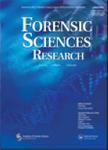Assessing the thermal stability of toolmarks casting materials through optical comparison microscopy,virtual comparison microscopy and quantitative similarity scores
作者机构:Forensic Chemistry and Physics LaboratoryHealth Sciences AuthoritySingapore
出 版 物:《Forensic Sciences Research》 (法庭科学研究(英文))
年 卷 期:2022年第7卷第4期
页 面:782-789页
核心收录:
主 题:Forensic sciences casts coronavirus comparison microscopy polysiloxane thermal stability toolmarks
摘 要:Toolmarks,particularly those found on bulky,inaccessible or immovable items,can be recovered by *** allow for subsequent comparative examinations,the casting material,typically polysiloxanes or silicones,must be able to capture and preserve fine details within a toolmark *** study the stability of such details after exposure to heat,toolmark casts were heated at either 60°C for 2 h,or 90°C for 1 *** casts were subsequently compared to casts that had not been exposed to heat,using traditional optical comparison microscopy,as well as virtual comparison *** toolmark signatures were also extracted from the casts and compared pairwise to obtain quantitative similarity scores based on cross-correlation,consecutive matching striae and Mann-Whitney *** results show that the fine surface details captured on all four commercial toolmark casting materials tested herein remained stable after exposure to *** study shows that the above heating protocols are viable viral inactivation methods for toolmark casts that are potentially contaminated with human coronaviruses,such as *** findings also apply to other scenarios,such as for casts that were left in a vehicle parked under the sun.



